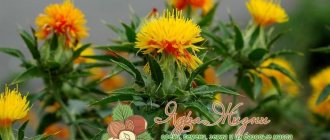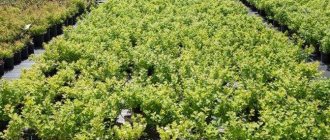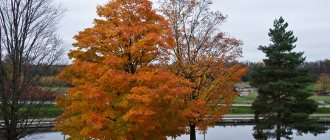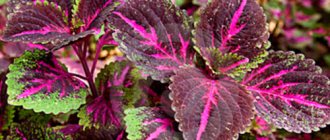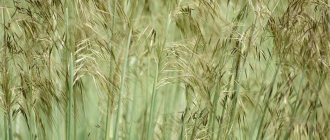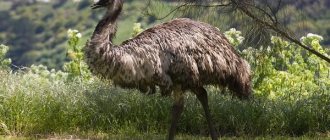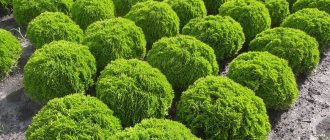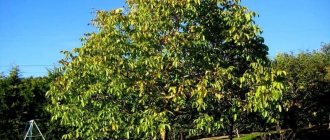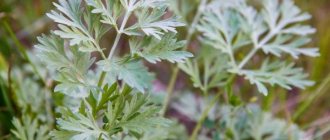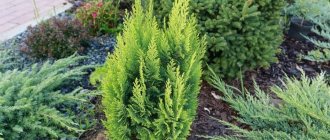What does speckled yaerysma look like?
The flower is very common in nature, so many consider it a nuisance weed. The plant is classified as Lamiaceae or Labiatae.
Decorating the garden with the help of yasna
The description of clarity is determined by the following points:
- the stem is knotty and curls along the ground, rising 15-20 cm;
- the leaves are dark green in color with a white spot in the middle;
- the shape of the leaves is teardrop-shaped with jagged edges;
- the flowers may be white, purple or slightly pink.
Appearance of the plant
Lamia is especially common in Eastern Europe. Specimens can be annual or biennial.
Description and characteristics
Speckled nymph (Lamium maculatum) is a herbaceous plant from the Lamiaceae family. It is a perennial up to 70 cm tall with tetrahedral pubescent stems, ovoid finely toothed leaves arranged oppositely, and sessile flowers collected in false whorls.
The buds of the speckled clasp are bell-shaped, with five pointed teeth and a pink, purple or almost white corolla, curved and swollen near the throat. The upper part of the flower hangs over like a helmet. A characteristic feature of the plant is the presence of a spotted pattern on the lower lip of the buds. After flowering, the jasmine produces fractional fruits, consisting of four brown nut-like parts. Ripening begins already in June and continues at different times until autumn.
The speckled clear is widespread in Asia Minor, the Mediterranean and Iran, as well as in Europe. In North America, the plant can be found as an alien. For life, the grass usually chooses ravines, mixed forests and bushes.
Speckled jasmine blooms from May to October
Common varieties
Yamna plant - flower types, planting and care
Yasnotka is divided into several varieties. Each option has its own color of buds and leaves. Distinctive features are the shape and height of the plant:
- Lamia Golden Anniversary has yellow flowers and is popularly called greenweed. It has yellow inflorescences and miniature leaves. The spotted lily Golden Anniversary is often planted in gardens and flower beds;
- Purple Dragon is the most common variety and is called “red nettle.” Dragon has the widest distribution;
- Lamium Pink Chablis has pink flowers that are arranged at leaf nodes with a distinct green and white pattern;
- Lamium is a bush on which white buds bloom. The second name is “deaf nettle”.
Lamium Maculatum has several other varieties that have unique bud color, leaf shape and blade shade.
Growing from seeds
Sowing
Laminaria is propagated by seeds. It is recommended to sow them in late autumn or early spring, at which time seed germination increases significantly. The seeds are sown not for seedlings, but directly into the garden.
Before you start sowing, you need to prepare the site. To do this, dig up the soil and remove all weeds. Level the surface of the soil in the area and distribute the seeds evenly. When the seedlings grow a little, they can be thinned out if necessary. Caring for the seedlings is quite simple; they only need to be watered moderately in a timely manner, if there has been no rain for a long time. Do not allow the top layer of soil in the garden bed to dry out, but at the same time make sure that the liquid does not stagnate in the root system of the plants.
Most often, the grass does not need weeding, because it itself can suppress the growth of weeds, while it covers the area with a continuous carpet. However, perennial weeds, which have a very powerful root system, will have to be removed from the site.
Lamia, propagated by seed, blooms only in the second year after the seeds are sown. Experts advise not to allow uncontrolled self-seeding of this plant, because over time it can begin to suppress the development and growth of other crops growing in the garden and located nearby. If you decide to plant different varieties of claret, then choose areas for them located further away from each other. If they grow next to each other, this may have a negative impact on their decorativeness, because after cross-pollination there will be no varietal differences between them.
Speckled lily (spotted)
Medicinal properties
Oakleaf hydrangea - winter-hardy varieties, planting and care
The plant is rich in many microelements, which are contained precisely in the leaves and trunks of young shoots:
- flavonoids;
- ascorbic acid;
- essential oils.
- tannins;
Note! The plant is used as a base for infusions.
Medicinal properties of jasmine
Infusions are used to treat coughs, relieve inflammation, and treat urinary problems. A herbal decoction is added to baths for the body, hands and feet. It has an excellent healing effect. Gynecologists recommend using a weak decoction solution for douching.
Yasnotka in landscape design
Among gardeners, the most popular varieties are variegated varieties. They are cultivated as decorative landscaping in free areas or grown in flower beds as separate decorative groups. This plant is best planted near hosta, lungwort and heuchera. Terraces, gazebos and balconies are often decorated with clear flowers. They can also be grown as an hanging plant.
Peculiarities of caring for the speckled clearweed in the open ground
The plant is not whimsical and does not require special conditions for normal growth and flowering. The main thing is to choose a suitable place with good soil and organize regular watering.
Temperature
The winter hardiness of claret is amazing - the leaves will remain green until frost. The plant will have a normal appearance even at 5 °C. In summer, the bush can withstand the highest temperatures if moderate watering is provided. A temperature of 20-25 °C is considered comfortable.
Lighting
The ideal place for growing would be an area that is in the shade of tree crowns. Can be planted in flower beds next to tall flowers or shrubs.
Ideal place for a flower
Watering
The plant loves moisture, so watering should be frequent and plentiful. You need to ensure that the water does not stagnate.
Note! It can withstand short-term drought, which will affect the appearance of the plant: the leaves will begin to turn yellow, the flowers will wither and fall off.
Spraying
The flower tolerates spraying normally, so watering can be done from a watering can.
Humidity
The plant is not whimsical in terms of humidity. If watering is done regularly, there will be enough evaporation from the soil.
Priming
In order for the clearweed to develop normally, you need to select an area with light and moderately fertilized soil. The composition should include minerals and trace elements, but it is not advisable to take too fertile soil, since it causes the plant to enter an aggressive growth phase.
Feeding
For feeding, you can use mullein soaked in water or mineral fertilizers in liquid form.
Ideal flower food
Important! If the dose of fertilizer is too large, the bush will grow greatly in a short time.
Fertilizers should be applied as needed. If the bush grows slowly, you need to fertilize it.
Planting a claret
For constant growth, choose a bed in partial shade with moderately fertile soil, moist and loose.
A plant in too fertile soil will begin to develop very actively, even losing its distinctive varietal characteristics - the pattern on the leaves.
The perennial grows in one place for up to 5 years, then it needs renewal and replanting.
The seeds are sown in very shallow furrows, and the seedlings must be thinned out.
Delenks and cuttings dig holes commensurate with their root system. Pour water into them and add a little compost.
The plant is strengthened in the hole and lightly compacted. After 2-3 days they begin to water regularly until it takes root.
Attention! Perennial clarets of different varieties should not be planted close to each other. Plants are easily pollinated and lose their varietal traits.
When and how does it bloom
Different species have unique flowering periods. It usually starts in May and ends in October. The flowers of each variety have the same structure, but different colors and sizes.
Clary flower
Types of flowers
Flowers can have different colors, ranging from dark purple to white.
Flower shapes
The bud is shaped like a snapdragon (Antirrhinum). The flower can reach a length of 2-3 cm.
Flowering period
Flowering begins in late spring and continues until late autumn.
Changes in care during the flowering period
During the flowering period, you need to carefully monitor the soil moisture and carry out periodic fertilizing - once every 2-3 weeks.
Types and varieties of chrysanthemums with photos
Today, there are approximately 25 species of such a garden perennial plant as damselfish. Below we will describe those that are most popular among gardeners:
White nettle or dead nettle
This herbaceous perennial can reach a height of about 0.45 m. The surface of the shoots and foliage is rough to the touch. The oval-elongated leaf plates are painted in a greenish tint, their edges are jagged. They are attached to the shoot by short petioles. Flowering begins in June, and it ends only in the last days of September. The flowers are painted white.
Purple nettle or red nettle
In the garden, this species is cultivated as a biennial or annual plant. The length of the shoots is about 0.25 m, they are densely covered with very small oval leaf plates with a dark green color. The formation of buds begins in the middle of spring, but in general this plant blooms for several months.
Spotted or speckled lily
This is a tall herbaceous plant that has highly branched stems. The green foliage is decorated with veins of a silvery hue. Pale pink flowers can be seen on bushes during the flowering period from May to October. The best varieties:
- Album - snow-white flower color;
- Beacon Silver - foliage is painted in an unusual silver shade;
- Aureum - the color of the flowers is purple and the foliage is yellow.
Greenweed, or yellow
Unlike other species, the creeping stems and foliage of this plant are pubescent. The shape of the leaf plates is elongated-oval, sometimes their surface is decorated with a marble mesh. The appearance of yellow flowers on the shoots is observed in the first days of May. During the season, the bushes may bloom again. The best varieties:
- Argentatum - stripes are located on the surface of wide green leaf plates;
- Silver Carpet - oblong foliage is decorated with a pattern of a silver shade.
Warbler's eagle
When this low-growing plant blooms, small, rich pink flowers form on it. Flowering duration is about 2 months (May–June).
How to propagate speckled damselfish
There are three types of reproduction:
- seed germination;
- cuttings;
- dividing the bush.
Note! The most popular propagation option is dividing the bush.
Each option has its own characteristics and methods of planting and rooting.
Germination of seeds
Seeds are sown in open ground in early spring or late autumn. It is necessary to make small trenches in which the seeds are evenly placed. Next, dig in a small layer of soil and water. Within 1-2 weeks the seeds will germinate.
Rooting cuttings
The cuttings are harvested at the end of summer. How to do it right:
- Prepare a mixture of sand and peat. Place in a small container.
- Dig the twig into the substrate and water it.
- Cover the pot with a cut bottle.
Reproduction of claret
If condensation appears on the bottle, it is necessary to ventilate. When the roots appear, the sprout can be transplanted into open ground.
Dividing the bush
The bush is divided in early spring as follows:
- Dig up a large bush.
- Partially remove the earthen ball from the root system.
- Divide the bush into several parts.
Rooting such a specimen is easy if there are normal shoots on the root system.
Botanical description of jasmine
Among the clasps there are both one- and two-year-old herbs and perennials.
The pagons are creeping, branch strongly and send out roots at the nodes as a result of contact with the soil.
The leaf blades are dark emerald in color, finely toothed, pointed towards the apex.
Along the central vein there is a silvery spot.
The flowers have a characteristic shape for all Lamiaceae, white, pink or purple.
The fruits are small coenobia, composed of 4 nut-like fragments.
Possible problems when growing speckled damselfish
Speckled lily is not very attractive to pests, and flower diseases rarely occur. But if watering is disrupted, some problems may arise.
Diseases
Diseases affect jasmine quite rarely. Sometimes problems may arise with the root system, which is located close to the surface. As a preventive measure, you can sprinkle the ground around the trunk with ash.
Possible problems during the growing process
Pests
In the dry season, with a lack of moisture, the plant can be attacked by scale insects and spider mites. An open area with damselfish can attract caterpillars and mealybugs. Treatment with special chemicals is required, or you can treat the leaves with a soda solution.
For your information! If the soil remains wet for a long time, rot may appear. In this case, diseased specimens must be removed and the rest treated with a fungicide.
Lamia is a very popular plant that is used in folk medicine and landscape design. Unpretentious, grows quickly - these are the main advantages that are valued by gardeners. There are many varieties that differ in the color of their buds and leaves, so everyone will find a variety to their liking.
